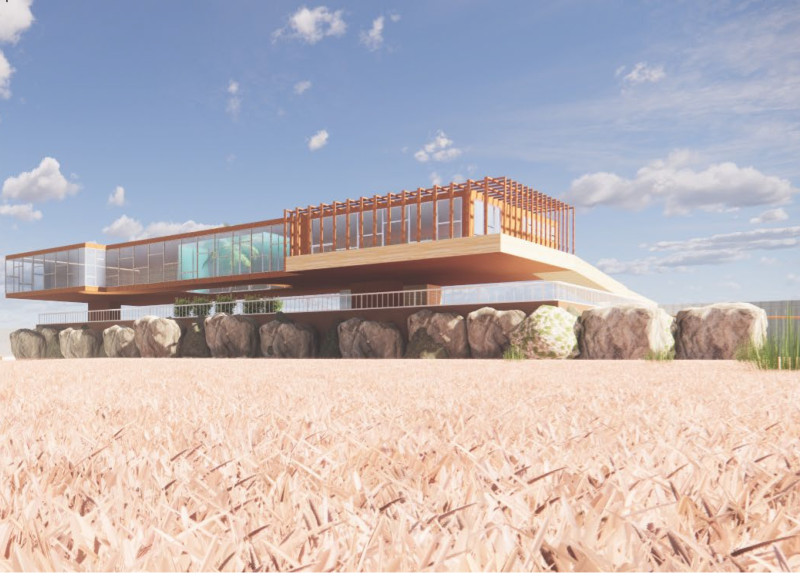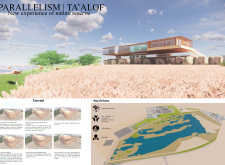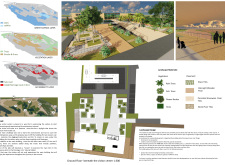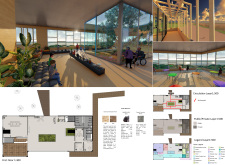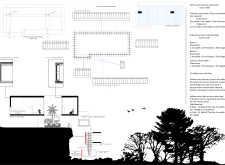5 key facts about this project
The architectural form features a series of interconnected paths that guide visitors through the landscape, allowing for unobstructed views of the flora and fauna. The design emphasizes sustainability and minimal environmental disruption, achieved through the use of prefabricated materials and innovative construction techniques. Key components include a visitor center with educational spaces, observation areas, and accessible routes that merge seamlessly with the terrain.
Sustainability and Integration with Nature
The design prioritizes sustainability through carefully selected materials and construction methods. Precast concrete panels and hollow-core slabs are utilized to minimize the ecological footprint during the building process. The use of SMARTA M50 glass enables natural lighting while enhancing energy efficiency. The integration of a variety of natural finishes, such as aluminium wood, ensures durability and blends well with the surrounding environment.
The project's landscaping approach complements architectural elements, creating a cohesive experience. Pathways constructed with grass tiles are designed to soften the building’s impact on the landscape. Diverse vegetation is incorporated into the site, encouraging biodiversity and offering educational opportunities regarding local ecosystems.
Unique Visitor Interaction
This project stands out due to its design that promotes direct interaction with the natural environment. By incorporating multiple viewing points and paths that provide different perspectives of the landscape, visitors are encouraged to engage actively with their surroundings. Educational facilities within the visitor center are dedicated to conservation topics, facilitating hands-on learning experiences.
The strategic layout is crafted to keep disruptions to wildlife at a minimum, allowing visitors to observe animals without disturbing their habitats. This consideration not only enhances the visitor experience but also reflects an understanding of the delicate balance between human activity and wildlife preservation.
Exploring this project further reveals detailed architectural plans, sections, and designs that illustrate its sophisticated integration with nature. For a comprehensive understanding of its architectural ideas and their implementation, readers are encouraged to delve into the project presentation, which provides deeper insights into this innovative architectural endeavor.


